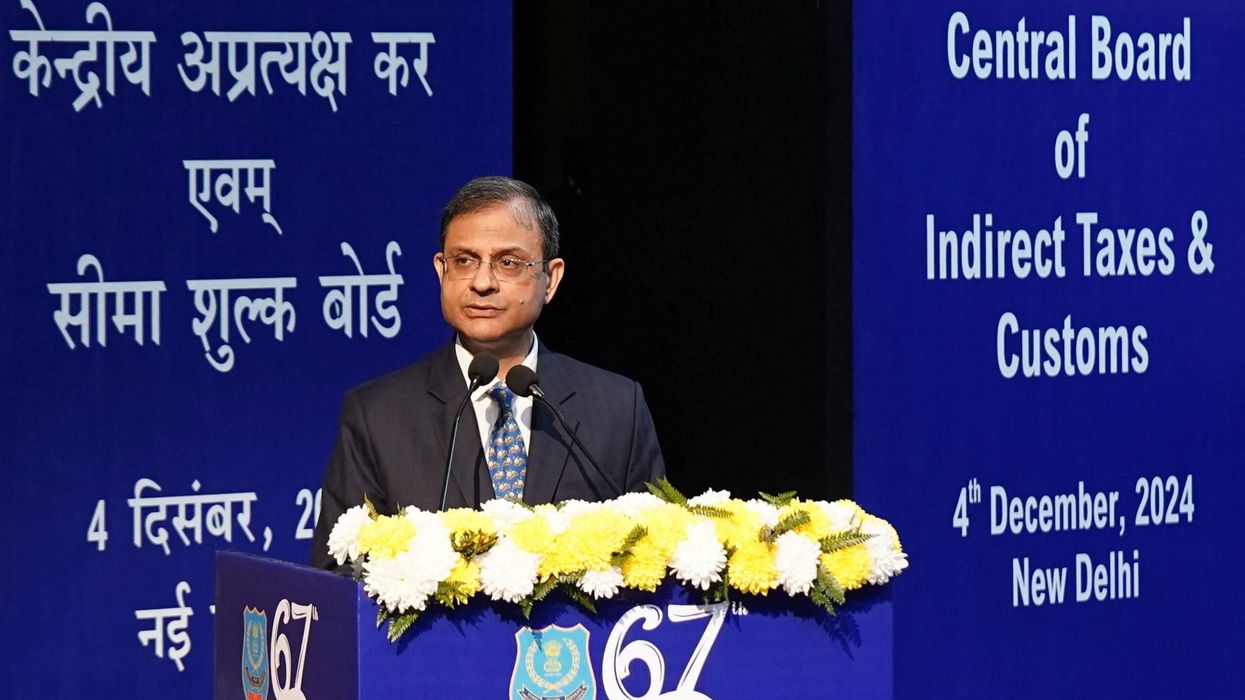INDIA'S DLF sold a $1 billion (£830 million) upmarket residential project in 72 hours while rival Godrej Properties is offering $3m (£2.5m) apartments to clients selected by invitation, two off-plan sales that are signalling a revival in luxury housing.
Property developers say spacey high-price apartments that come with add-ons like concierge services, spas, multi-level parking, large green open spaces and a heated pool have become the rage. There are no such amenities in the individual houses and old apartment blocks that dominate India's cramped and crowded cities.
Many people want to upgrade their homes after the Covid-19 pandemic confined them indoors, industry executives say. Working from home has also led to a demand for larger apartments, supported by rising incomes and India's growing number of nouveau riche.
DLF's Arbour project in Gurugram near New Delhi attracted more than 3,000 applications for 1,137 apartments priced at $869,000 (£724,166) each, extremely high prices for the area. The booking centre was besieged by people queuing to buy homes during the project launch weekend in February.
"I haven't seen such a mad rush in a decade," said Prashant Thakur, head of research at real estate consultant Anarock. "The luxury residential market is on the path to revival."
Varun Arora, a 37-year-old investment professional, said he is looking to upgrade from his current rented apartment to the DLF development which he said he likes for its grand reception area, high-speed elevators and enough area to jog without having to leave the complex.
"Having a green, open, clean space with restricted access (to outsiders) is of supreme importance. You don't want to run on the road. From a lifestyle standpoint that is paramount," he said.
Supply of new luxury homes in India has been constrained in recent years, hit by an economic slowdown in 2019 and then the pandemic, which dampened sentiment in 2020 and forced developers to put brakes on new project launches.
Anarock data shows that luxury condominiums, defined as those selling above Rs 15m (£152,500), accounted for 17 per cent of all housing launches in 2022, touching an at least five-year high. And launches of once-popular affordable homes - those priced below Rs 4 million (around £41,666) - halved to 20 per cent of the total in the period.
In all, a record 65,700 luxury units were sold in 2022, three times the previous year, with Mumbai, New Delhi and Hyderabad leading sales. In 2019, before the pandemic, 18,150 units were sold.
In Mumbai, Sugee Developers last week published front-page advertisements offering sea-view residences starting at $1.7m (£1.42m) in a development that will have an amphitheatre, landscape gardens and a sky deck lobby.
Godrej's "Connaught One" project near central Delhi's premier shopping district is offering apartments for $2-$3.3m (£1.67-2.75m), on par with a good class bungalow in parts of the city.
"We are seeing more desire for larger spaces, lifestyle upgrade from founders of listed firms, startups, lawyers. We are getting more calls and as the available inventory is low, luxury properties are being sold quickly nowadays," said Amit Goyal, India CEO at Sotheby's International Realty.
Sotheby's, whose most expensive India property listing currently is a $20m (£16.67m) bungalow in New Delhi, says 61 per cent of surveyed high-net-worth Indians plan to buy luxury real estate this year, slightly lower than 67 per cent last year.
HEATED POOL
India's 1.4 billion people have a per capita income of just $2,300 (£1,916.67), but the country has more than 800,000 dollar millionaires. Knight Frank estimates India will have 1.4 million millionaires by 2026, some 77 per cent higher than in 2021.
What has also changed is the propensity of the wealthy to spend, after decades of hiding away riches in a country that was socialist and frowned on ostentatious living.
Mercedes sold a record number of high-end cars in India last year and luxury goods are in high demand too. Knight Frank data for 2022 shows 53 per cent of ultra-wealthy individuals splurged on both luxury watches and handbags, compared with an average 41 per cent and nine per cent in 2020, respectively.
At the DLF site on a recent Sunday afternoon, buyers and brokers finalised paperwork as waiters served meals that included quesadillas, pastries and Indian curries - unusual scenes in a city where most homes are sold by local brokers or by developers in no-frills offices.
Godrej meanwhile has pushed exclusivity for its development.
It set up space in New Delhi's colonial-era Imperial Hotel where invited guests were shown 3D models of the project and videos that highlighted amenities such as a heated pool and nanny-on-call services.
So far, around 160 people were invited for a viewing and 17 of 46 flats sold in the eight-storey project.
"We don't want to only sell this property but create a society of the most influential," said Godrej sales manager Yuvraj Manchanda. "Millionaires and billionaires will buy this."
(Reuters)
India witnessing 'mad rush' for luxury housing
DLF’s Arbour project in Gurugram attracted more than 3,000 applications for 1,137 apartments priced at $869,000 (£724,166) each, extremely high prices for the area













